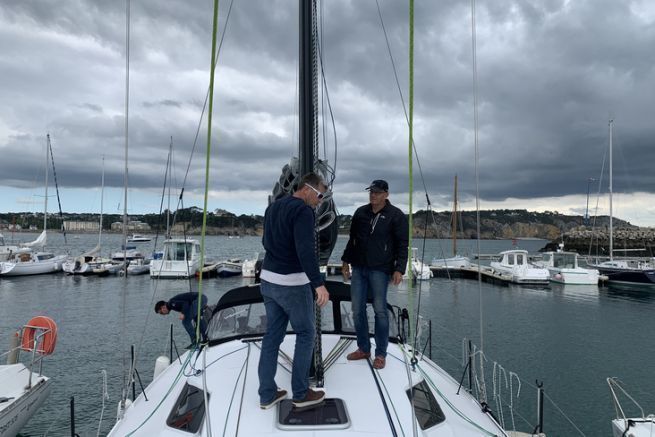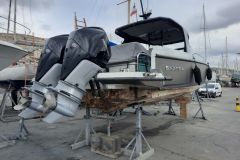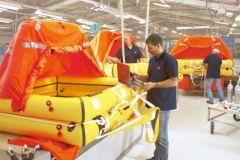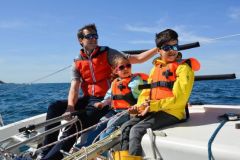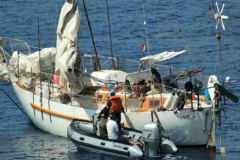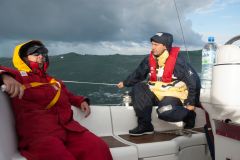Informing about risks at sea
Before departure, the skipper must make his crew aware of the risks involved in sailing. It's not all fun and games! Man overboard, collision, fall, injury, error of course, bad maneuver, waterway, storm, etc. These situations can occur and there are ways to manage them, by managing panic as best as possible. Informing is already reassuring.
Knowing your crew
It is important to know the level of each person and their skills to manage certain situations before leaving. Is the crew member autonomous? Does he know the marine vocabulary? Is he able to manage a quarter? To make decisions? Analyze a weather situation? Does he have a tendency to panic? Is he/she cool and collected? Does he have a reassuring side?
His or her background and professional activity may help him or her to handle certain aspects better than another team member. For example, a medical professional may be better able to maintain composure in the face of injury or illness. They may also be better able to provide care. Try to assign a secondary mission to each person that they will have to carry out in the event of a problem: one warns the emergency services, the other maneuvers, the third reassures the others
Finally, it is a good idea to appoint an alternate captain to replace the captain in case of incapacity.
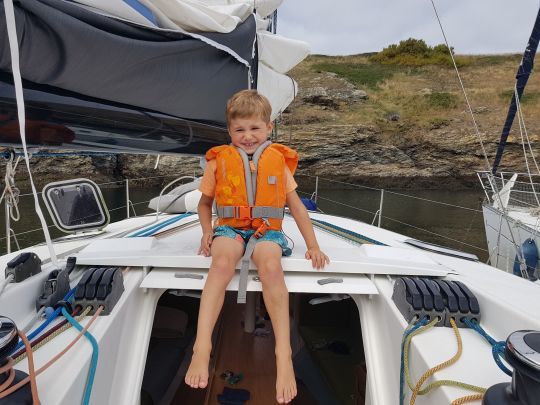
Check the position and operation of safety equipment
Anticipating is protecting yourself. You don't go looking for your lifejacket in the middle of a fire. Also tell your crew where the different equipment is located and how to use the main ones: VHF, lifejacket, lanyard, harness, fire extinguisher, etc. Check their operation.
Vests, harnesses, lanyards, distress flares, life raft, VHF, horseshoe buoy, roll-over light, IOR pole, flashlights, GPS (MOB button), fire extinguishers, batteries, gas cut-off valve, hull valves
A map with the location of the main equipment, displayed next to the map table, can be a good support during the briefing and especially in case of an incident.
Again, check the skills of your team members in the use of safety equipment. Who has ever hit a hand-held rocket? Deployed a life raft? Performed a man overboard maneuver? These can be valuable allies in any situation.

Establish rules
The skipper must explain to his crew the rules in use on board according to a given situation: moving around on board while holding on, wearing a lifejacket, wearing a harness, using sails, specific equipment, etc
For example, to go out in the cockpit, children must wear their lifejacket. They are not allowed to go on the front beach without an attendant. At night, wearing a life jacket is mandatory for all and must be coupled with a life line and a harness
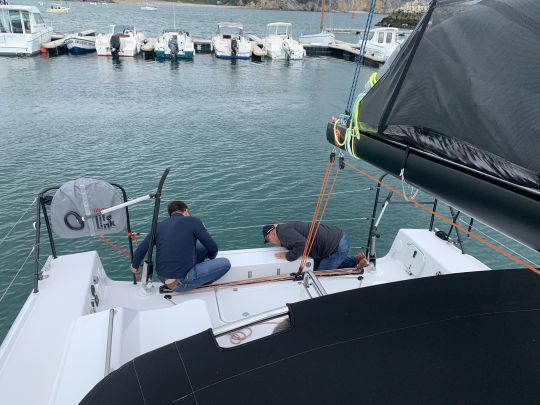
Prepare your navigation
Each day, it is important to prepare the navigation and to inform the crew: planned destination, number of miles and estimated duration, choice of route, potential dangers, possible shelters, planned maneuvers and description of the arrival place. Sharing information is a guarantee of safety.
Look at the weather forecast to see how the weather will change, what sails we will use, but also how we will equip ourselves.
Finally, define the roles of each person, who will be helmsman, crew, cook, etc.
